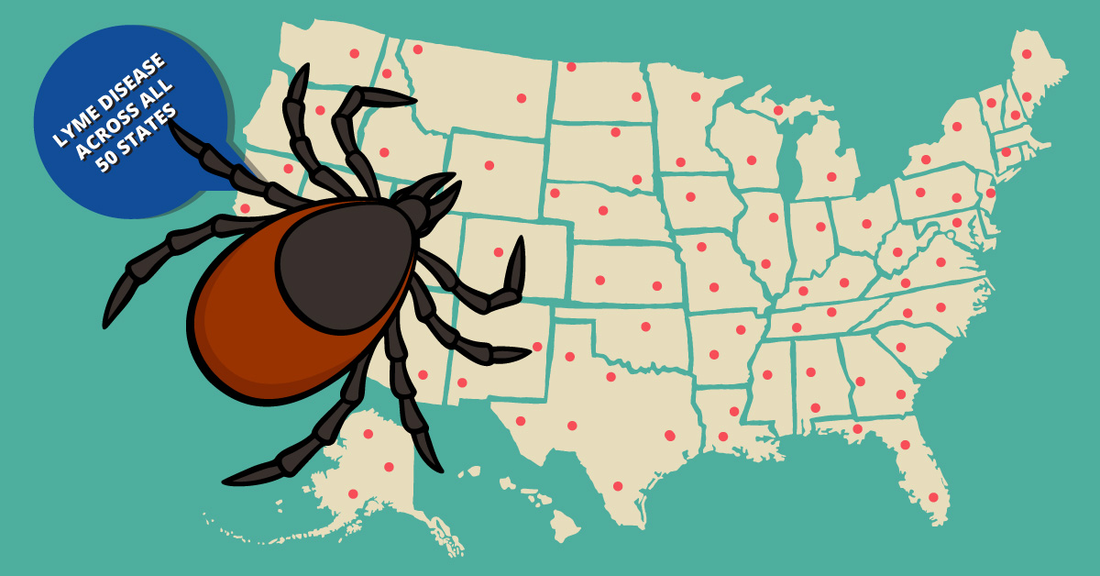
What is Lyme disease?
Share
It’s summertime now but it’s ticks’ season as well! When you go out for a walk in the forests, parks, riverside, mountains, etc.…, pay attention to ticks and try to avoid the highly infected areas! Think about the prevention and use bug repellents and wear long-sleeved t-shirts and pants to avoid tick bites. With their saliva, ticks can cause several kinds of diseases for you and your loved ones. One of the most serious diseases that they can spread is Lyme disease. We collected the symptoms of this for you.

The most frequent disease that a tick bite can cause is the Lyme disease. Lyme disease is caused by bacteria that are spread by tiny, infected deer ticks. Both people and animals can have Lyme disease, but for people, it is more frequent.
In the United States, Lyme disease most commonly occurs in the Northeast and mid-Atlantic regions and in the upper Midwest, but this illness can be found anywhere across the US. Lyme disease is spread by the bite of an infected black-legged tick. The tick usually must be attached to a person for at least 24 hours before it can spread the germ. Lyme disease can occur during any time of the year! Because of the mild winter, ticks are proliferated all over the world, and tick season is now in every season!
There are two different stages of this disease: the early stage, which means the symptoms appear days to weeks after the tick bite; and there is the late stage which means that the symptoms will appear weeks to years after the tick bite.
Early-stage (days to weeks) symptoms are the following: The Lyme disease has lots of symptoms. The most common early symptom is a rash where the tick was attached. It often, but not always, starts as a small red area that spreads outward, clearing up in the center so it looks like a donut. Not visible but markable signs are the flu-like symptoms: headache, fever, malaise, dizziness, lymphadenopathy. During the early stage of illness, Lyme disease may be diagnosed clinically in patients who present with a rash. These can occur any time after the tick bites you. Even though these symptoms may go away by themselves, without medical treatment, some people will get the rash again in other places on their bodies, and many will experience more serious problems.
Later stages (weeks to years) symptoms: If the disease is untreated, people with Lyme disease can develop late-stage symptoms. In the late stage of Lyme disease, the symptoms are more complicated like the multiple secondary annual rashes, transient, migratory arthritis and effusion in one or multiple joints; and migratory pain in tendons, bursae, muscle, and bones. Other symptoms like nausea and vomiting, headache, confusion, weakness, unsteady walk, sensory changes, including numbness or tingling, trouble with vision, seizures can also appear in the late stage of Lyme disease. About 60% of people with untreated Lyme disease get arthritis in their knees, elbows, and/or wrists. Arthritis can move from joint to joint and become chronic. That is why this disease is very dangerous!
We encourage you to do everything you can to prevent Lyme disease!
